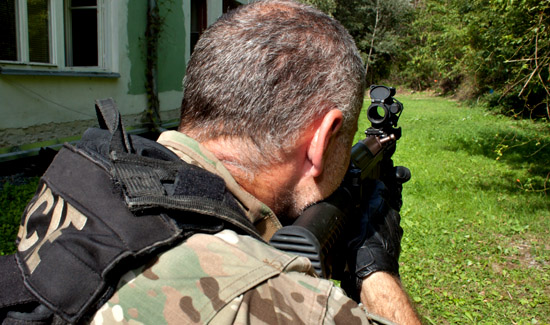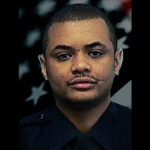What About “Warning Shots?” The Debate Continues

by Ken Crane
Over the years I have had the opportunity to participate in firearms instruction that includes giving concealed weapons permit instruction to civilians. One question I frequently throw out to classes is the concept of warning shots to get their take on what they think. Without hesitation, the clear majority of students immediately peg it as a bad idea for all the obvious reasons.
Suffice it to say my mind was boggled when I heard about and, actually saw an article published in the March 2017 issue of Police Chief magazine titled: “President’s Message: Use of Force Issues: Warning Shots and Shots Discharged at Moving Vehicles.”
The article was authored by Chief Donald W. De Lucca who presently serves as the Chief of Police of the Doral, Florida Police Department. Chief De Lucca also currently serves as the President of the International Association of Chiefs of Police (IACP). Police Chief Magazine is the official publication of the IACP. Articles, information and studies that come from the IACP are often looked upon as pearls of wisdom within the national law enforcement community. The ideas and concepts produced by them are often turned into the latest buzz phrase or training idea that sweeps the national law enforcement community. Police departments around the country will then often rush to be among the first to adopt what are often viewed as the latest cutting-edge training philosophies and techniques into their agency curriculums.

An excerpt from De Lucca’s article states:
“Warning Shots. The inclusion of an allowance for warning shots in the Consensus Policy should not negate the establishment of a more restrictive policy on the topic by individual agencies.
Defined as “discharge of a firearm for the purpose of compelling compliance from an individual, but not intended to cause physical injury,” warning shots are inherently dangerous. The Consensus Policy outlines very strict guidelines for the use of warning shots, while still providing latitude for officers to use this technique as a viable alternative to direct deadly force in extreme and exigent circumstances. The Consensus Policy makes clear that warning shots must have a defined target and can be considered only when deadly force is justified and when the officer reasonably believes that the warning shot will reduce the possibility that deadly force will have to be used.
Finally, the warning shot must not “pose a substantial risk of injury or death to the officer or others.” Essentially, the intent of the Consensus Policy is to provide officers with an alternative to deadly force in the very limited situations where these conditions are met. However, they are not meant to be a requirement prior to the use of deadly force.”
Kind of makes one wonder what they’re smoking over there at the IACP. So, we’re going to float the idea/concept of using warning shots in police work while simultaneously laying out so many restrictions and warnings as to make it impractical in the real world especially when pulling a trigger is usually a split-second decision.
Most police agencies in America teach from day one that if an officer clears leather and pulls the trigger, they had better be able to articulate a threat of imminent serious physical injury or death to themselves or a third party.
Once this requirement is satisfied, we aim and shoot center mass to the largest part of the suspect available to us. Now, when we find ourselves on a scene confronting a non-compliant suspect we should be able to crack off a couple of warning shots followed by an appropriate stern warning. “BY GOD, WE’RE SERIOUS OVER HERE! DROP THAT KNIFE RIGHT NOW!”
Of course, one of the responding officers to the scene will have to be designated to bring the portable bullet trap forward so there will be an appropriate safe zone to fire the warning shots into. I can see it now, “Patrol 81 we’ve got things pretty well locked down here. We’re gonna try some warning shots. ETA on that unit with the bullet trap?” Just a thought here, wouldn’t it be a lot easier to issue each patrol Sgt. A couple of flash bangs to get the same effect without endangering everyone in creation? Just sayin.
The use of warning shots is dangerous for two very big reasons. First, it poses an additional huge and unnecessary risk for involved officers and the communities we serve. Second, it sets up unreasonable expectations from citizens moving forward. If there isn’t enough Monday morning quarterbacking going on in the police world as it is, why do we need to come up with policies that create additional false or unreasonable expectations? We already get screwy use of force board decisions as it is.
Now, imagine this question being posed in a use of force board: “Officer, did you really need to shoot that person? Wasn’t a warning shot an option?”
The bigger question is; who or what is driving these idiotic ideas? Who knows. Perhaps it’s part of the post-Ferguson era of policing we find ourselves in where cities around America increasingly find themselves under attack from small radical groups. Groups that routinely make ridiculous demands of Mayors and Police Chiefs. Unfortunately, many Police Chiefs in this country lack moral courage and leadership skills. They readily cave to political pressure to protect jobs with six-figure salaries and benefits packages.
They take the path of least resistance as they pander to Mayors, City Councils, City Managers and irate radical groups who live in a world of cotton candy and unicorns where evil doesn’t exist and police use of force is unnecessary. These same groups don’t have a clue as to what police work is like and most have never been in a job where they were regularly required to put their life on the line. Chiefs with political agendas or Chiefs who cave to political pressure are the same ones who have forgotten where they came from, have been off the street too long and are often out of touch with reality. It would appear some of the folks at the IACP fall into this category.
If citizens, taking concealed carry classes, not familiar with all the nuances of police use of force can see the stupidity and inherent risks associated with warning shots, shouldn’t we be able to expect the same of Police Chiefs?
Stay safe.
Ken Crane is the president of the Phoenix Law Enforcement Association.














